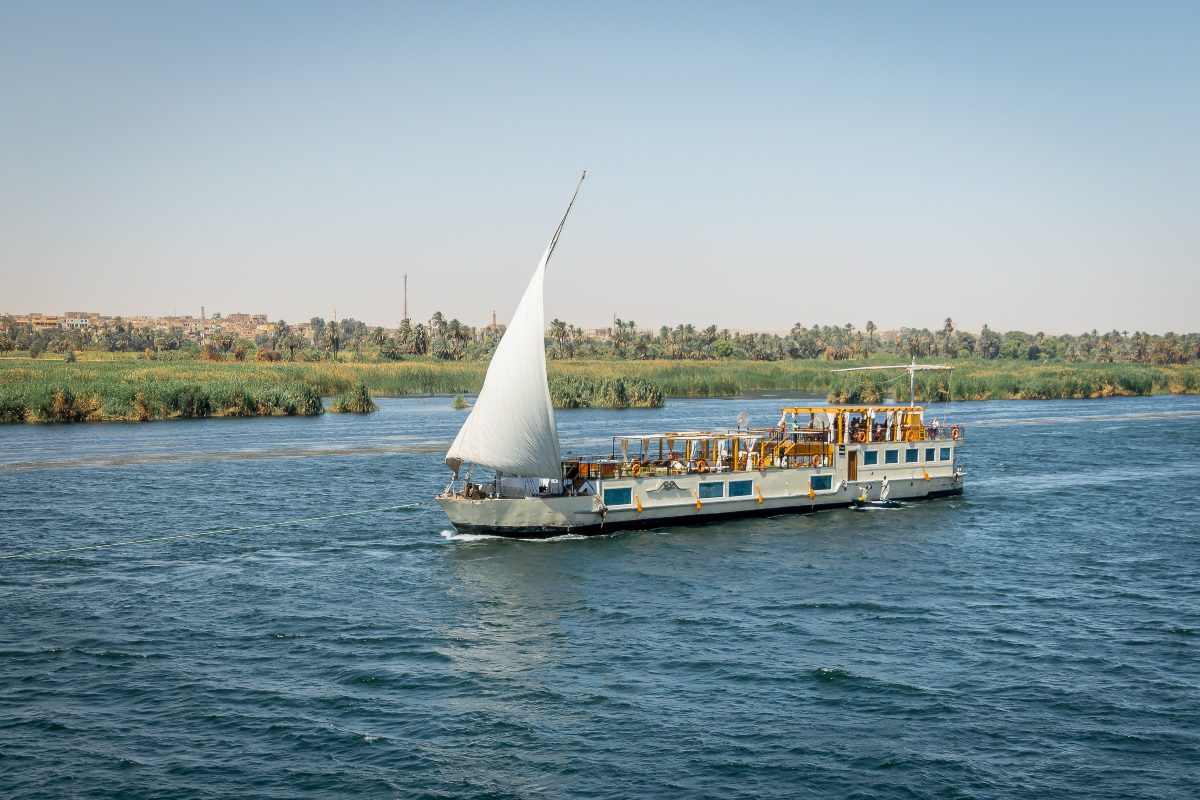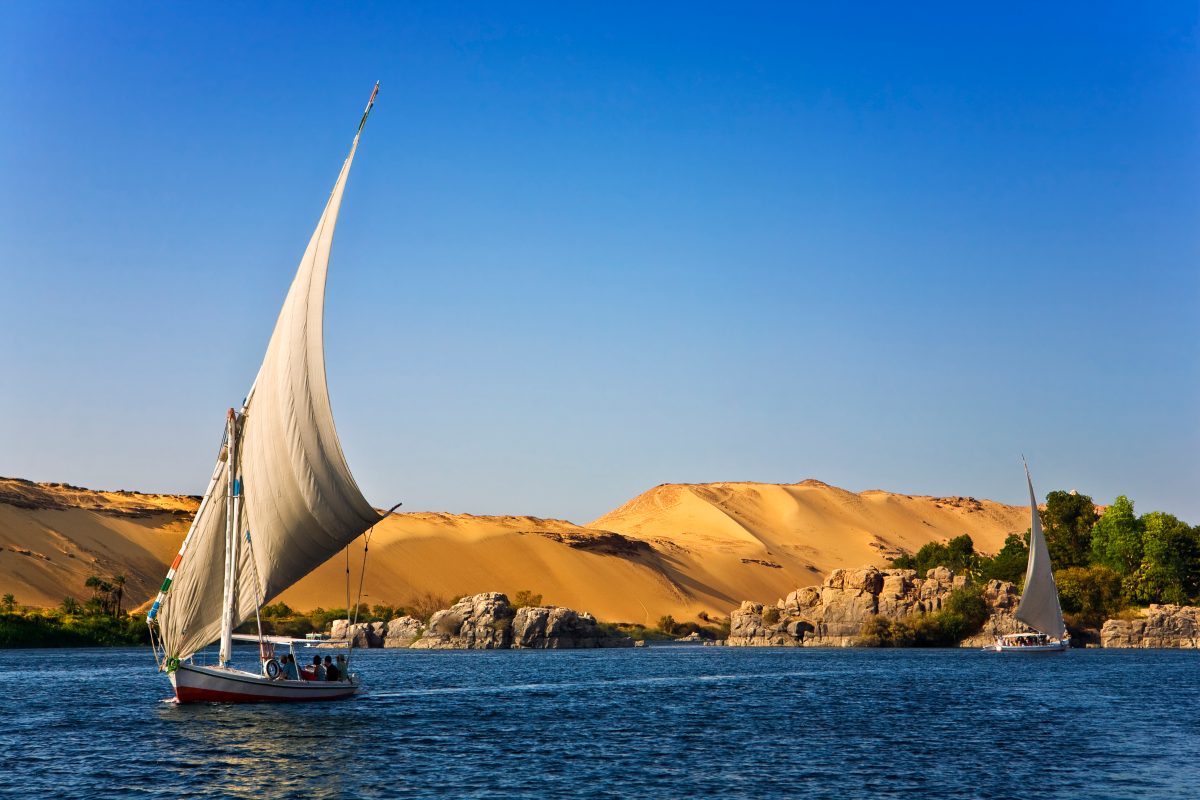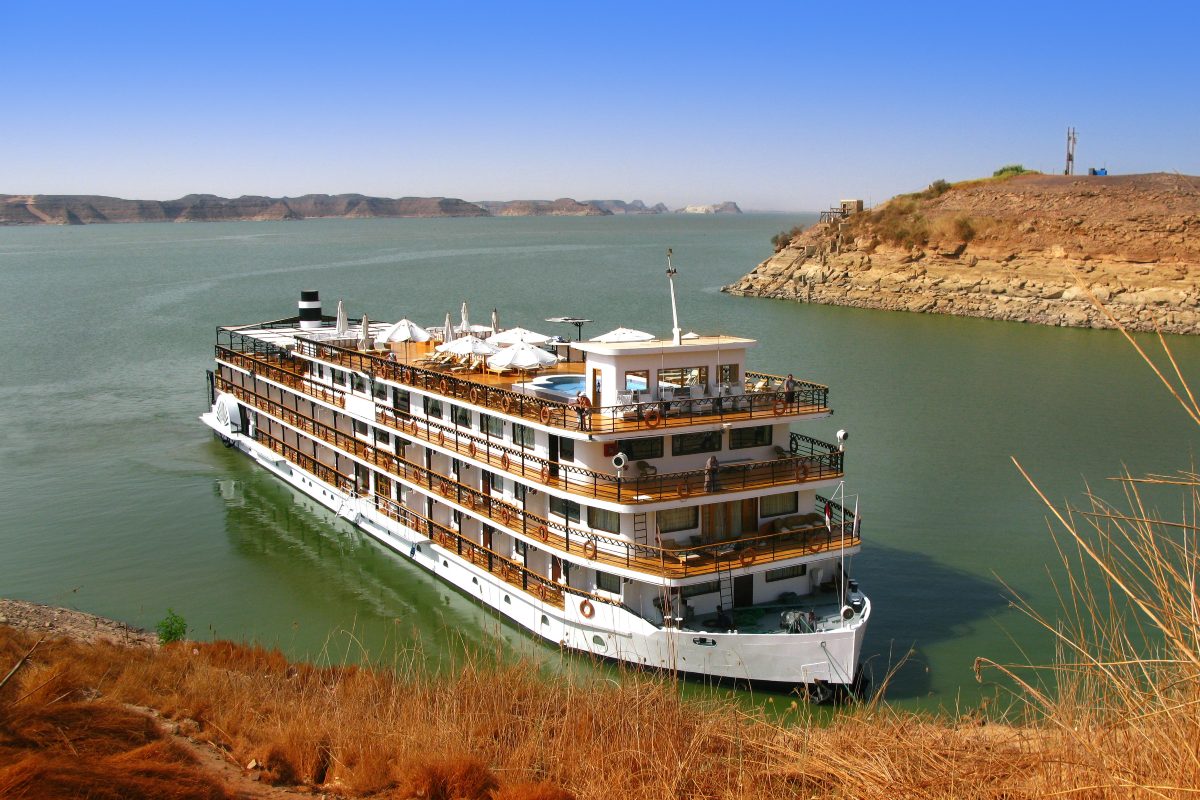Egypt’s Nile River has not only been a source of wealth since ancient times but also its ‘highway,’ the central axis of Egypt and the main communication route from north to south and vice versa. Today, in a world vastly different from the old, Nile cruises stand as one of the most significant tourist attractions in this country.
Therefore, Egipto Exclusivo specializes in Nile River cruises, offering a variety of options: different vessels and routes, whether integrated into broader tours or standalone, with all-inclusive or on-demand services… On this page, we share everything you need to know about this unforgettable experience: the types of ships used, the offered itineraries, and more.
There are three main types of ships for Nile cruises: motorships, dahabiyas, and feluccas. The motorship is the most modern and well-equipped, while the latter two are traditional sailing vessels. On Lake Nasser, all these types navigate, but as we will see, it is also possible to find intermediate vessels, smaller in size than the motorships but also powered by engines. Here we review each of these options in detail.
Motorships are the large vessels used for Nile cruises, capable of navigating year-round thanks to the precise regulation of the river’s flow by the Aswan Dam and the Esna Lock. These ships are smaller than those used in sea cruises but significantly larger than dahabiyas and feluccas. Typically, they are about 70 meters in length and feature multiple decks, usually between 3 and 5.
With hundreds available, there are daily departures from the major cities of Upper Egypt. However, the level of comfort varies greatly, so at Egipto Exclusivo, we only work with superior category or 5-star motorships and above.
In these cases, amenities include a swimming pool, a rooftop sun deck, a restaurant, bar, nightclub, massage room, a grand entrance hall, and even an extensive open kitchen for culinary workshops and tastings. And, of course, air conditioning. The cabins are equipped with ensuite bathrooms with showers, minibars, televisions, and other services comparable to those of a top-tier hotel.

In the 19th century, dahabiyas were the predominant mode of Nile navigation until they were gradually replaced by steamships and, later, motorships. However, in recent years, they have made a comeback for their undeniable charm. Thus, a Nile cruise aboard a dahabiya is like a journey back in time to the era when the first Egyptologists and Egyptophiles were exploring the country.
A dahabiya is a traditional barge-type vessel with a flat hull, which can be over 50 meters long and is equipped with two large sails, one at the bow and another at the stern.
While lacking some of the services and amenities of motorships, such as a swimming pool or dance floor, this should not be a deterrent. The traveler who chooses a dahabiya typically has a different profile: less interested in nightlife and more focused on immersively enjoying the unique ambiance that surrounds them.
Indeed, the slower pace of a dahabiya compared to a motorship is not a disadvantage but a boon, as it allows for a more leisurely contemplation of the landscape and the opportunity to listen to the natural sounds of the river. The nighttime activities on a dahabiya are also quite different from those on a motorship, such as stargazing or listening to music by a bonfire on the shore.
Another advantage of the dahabiya is its ability, as we will see, to dock or anchor almost anywhere, a flexibility not available to motorships. This allows for visits to places of great interest that often go unnoticed by the majority of tourists on motorships.
Therefore, the dahabiya is the perfect choice for those who seek the utmost comfort in their Nile cruises while also desiring a relaxing experience in harmony with the local environment and culture.

The felucca, often also referred to as a faluca or falúa, can be considered the smaller, more popular, and humble version of the dahabiya. It features a single sail and typically accommodates between 6 and 8 passengers. Consequently, the comforts aboard are more limited, such as the absence of cabins.
In cities like Aswan, you’ll find them everywhere, with companies and captains organizing multi-day Nile cruises, always downstream (south to north) to facilitate navigation. However, these vessels are much more popular for short excursions without overnight stays, ideal for exploring the islands in this river stretch or visiting Nubian villages, among other destinations. Indeed, a felucca is the vessel that literally brings you closest to the river experience.
Although Nile cruises are often discussed generically, there are different possibilities regarding itineraries. Undoubtedly, the most popular stretch is from Luxor to Aswan, but it can be extended both north and south, as we will explore next.
This is undoubtedly the most common itinerary for Nile cruises, for several reasons: its excellent navigability throughout the year, the well-developed tourist infrastructure of the cities, and of course, the numerous attractions in the form of natural beauty and pharaonic monuments.
Generally, these are the stages into which these Nile cruises are divided, along with their main tourist attractions:
An important feature of this stretch is the Esna Lock, located north of the city of the same name. This infrastructure, along with the great Aswan Dam to the south, regulates the river’s flow throughout the year. Its emptying or filling takes about half an hour, during which visitors often take the opportunity to visit the Temple of Khnum. Thanks to this lock, motorships overcome a height difference of about 10 meters to navigate from Luxor to the south, and vice versa, but its use by dahabiyas and feluccas is very infrequent.
Thus, the usual itinerary for a dahabiya is Esna-Aswan. However, even though the route is shorter in terms of length, Nile cruises on this traditional vessel offer an advantage: thanks to their slower sailing speed and ease of docking or anchoring anywhere, they allow for two stops that motorships do not make:
This is an extensive stretch of over 600 km, which can only be navigated by motorship and during the summer, when the river level is high enough to guarantee the viability of these Nile cruises. In recent years, the number of ships offering this route has decreased significantly, but it’s worth highlighting the essential stops that are usually included:
These stops offer a unique glimpse into the historical and cultural richness of Egypt, making the Cairo-Luxor cruise a journey not just across the Nile, but through time itself.

The great Aswan Dam prevents Nile cruises from progressing southward, a barrier that even the ancient Egyptians could not overcome due to the First Cataract, essentially a large concentration of huge rock blocks in this area.
However, the same dam gave rise to a vast artificial reservoir to its south: Lake Nasser, stretching to the Sudanese border, with an expanse of about 500 km in length. Consequently, this vast body of water hosts its own unique cruises: dahabiyas and motorships, sometimes of smaller dimensions, offering a different experience than that found north of the dam: more tranquil and silent navigation, with the same onboard comforts.
Many of these cruises also include the experience of fishing in this reservoir, home to the Nile perch, a large fish that can reach up to 2 meters in length. As for the monuments to visit along its shores, most were relocated here to prevent their loss due to rising water levels. These are the essential sites in any Lake Nasser cruise:
A cruise on Lake Nasser not only offers a serene and peaceful journey but also a voyage through history, as passengers encounter ancient temples and fortresses along the way.
Egipto Exclusivo can plan any type of Nile cruise for you. We boast a diverse fleet of our own dahabiyas and specialize in creating customized Nile cruise experiences tailored to your desires and needs. If you prefer a dynamic, comfortable, and entertaining journey, our motorships will provide you with an exceptional experience. On the other hand, if you are looking for a relaxing and stress-free voyage, our own dahabiyas will allow you to discover the majesty of the Nile at a leisurely and pleasant pace. Additionally, for adventure lovers, we offer thrilling journeys aboard a felucca. At Egipto Exclusivo, we strive to make your dream cruise a reality.
Regarding the amenities included in our Nile cruises, the most common arrangement is full board, where breakfasts, lunches, and dinners are included in the package, along with guided tours to the main monuments along the route. However, we can craft a tailor-made program with on-demand services, according to your preferences.
Another service included in our Nile cruises (and one we wish to highlight for its importance) is road transportation. Keep in mind that to reach the starting point or to return from the final destination, transfers to the airport or from nearby cities will be necessary. The same applies to traveling to the monuments along the route. Rest assured: our agency will handle all of this to ensure a seamless journey.
We can provide these Nile cruises as holidays in themselves or as part of a broader circuit, as you can see here. Thus, the Red Sea coast or the Pyramids of Giza are some of the destinations that can also be part of your journey.
So, whatever your intention, contact Egipto Exclusivo to plan your Nile cruise. There is no better way to discover Upper Egypt!
Fill out the form below to receive a free, no-obligation, tailor-made quote from an agency specialized in Egypt.
Travel agency and DMC specializing in private and tailor-made trips to Egypt.
Mandala Tours, S.L, NIF: B51037471
License: C.I.AN-187782-3